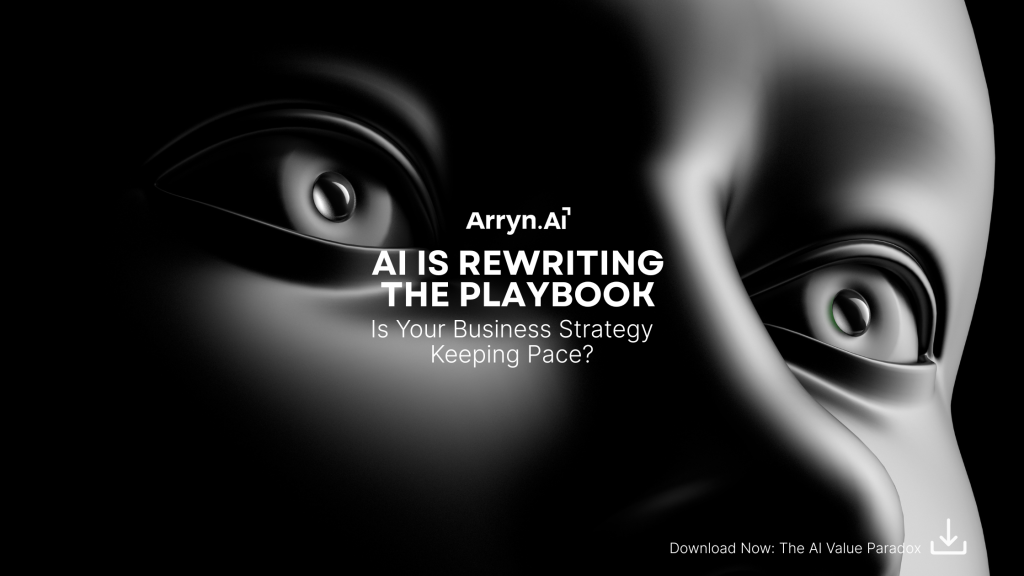Everywhere you turn, AI dominates the conversation — its potential, its pitfalls, and its promise to reshape the future of business. For CEOs and strategy leaders, AI isn’t just another tech trend; it’s a seismic shift redefining how industries compete, create value, and survive disruption.
The headlines are relentless, and the pace is dizzying. Yet, one question cuts through the noise: Is your business strategy evolving fast enough to keep up with AI?
The Age of Acceleration
While forecasts vary, AI’s global market value is projected to soar from roughly $200 billion today to as high as $2 trillion by 2030. According to PwC’s 28th Annual Global CEO Survey, 32% of CEOs report that generative AI has already increased revenue, while 34% say it’s boosted profits. Nearly half expect even greater profitability gains in the next year.
But here’s the truth — we’re still at the starting line.
As Anthropic’s CEO Dario Amodei calls it, we’ve entered the “compressed 21st century,” where decades of innovation could unfold within a single decade. Quantum computing, agentic AI, and automation are converging to compress time, accelerate progress, and transform the limits of what’s possible.
From Linear Growth to Exponential Innovation
Technological revolutions once unfolded linearly. Electrification, the internet, and mobile computing each took decades to reach maturity. AI breaks that pattern.
Processing costs for large models have dropped tenfold in just the past year, and global communication infrastructure now accelerates adoption faster than any technology before it. What once took decades to scale is now happening in months.
This is the dawn of convergent innovation, where AI combines with other technologies to create exponential outcomes — redefining efficiency, creativity, and decision-making.
New Rules for Strategy: Speed Over Scale
In this new era, traditional advantages like scale and capital are no longer enough. The AI advantage belongs to those who can adapt faster.
Winning organizations embrace:
- Speed over scale — agility matters more than size.
- Continuous learning — strategy becomes dynamic, not static.
- Agentic workforces — humans and AI agents co-create value.
AI doesn’t just accelerate business cycles — it reshapes the entire flywheel of innovation, decision-making, and customer engagement. Smaller players armed with AI can now outmaneuver industry giants.
Offense, Defense, and the AI Playbook
AI requires a rebalancing of strategic priorities.
Defensive strategy means protecting existing markets from AI-native disruptors. This includes integrating AI with legacy systems, managing workforce transitions, and maintaining customer trust.
Offensive strategy, meanwhile, focuses on reinventing products, processes, and experiences through AI. It asks:
- What unique data or knowledge assets can we use to build new AI-driven services?
- How can we disrupt ourselves before others do?
- What new business models emerge when we let AI guide innovation?
Forward-thinking organizations are already reallocating capital toward AI-first initiatives, pivoting away from outdated projects that no longer align with a rapidly shifting landscape.
AI-Driven Strategy: From Static to Self-Evolving
AI transforms strategy itself into a living, adaptive process.
Instead of quarterly plans and annual reviews, AI-powered strategic planning draws from live data — market trends, customer behavior, and competitor actions — to forecast and adjust in real time.
Imagine an executive cockpit where leaders can ask:
- How do my unit costs compare to competitors?
- Which regions are showing early demand shifts?
- What new opportunities are emerging in adjacent markets?
AI surfaces insights faster than human analysts ever could, turning data into decisions that drive continuous advantage.
Building Future-Ready Capabilities
To lead in the AI era, companies must invest in three pillars:
- Technology & Infrastructure – Build the data pipelines, compute power, and analytics systems to support real-time intelligence.
- New Ways of Working – Redesign workflows around AI agents, not legacy hierarchies.
- Responsible AI Governance – Ensure ethical, transparent systems that protect both reputation and long-term value.
Organizations that treat AI as an intrinsic part of their business strategy, not a side project, will be the ones that thrive.
The Road Ahead
For the average non-financial company in the S&P 500, every dollar of profit expansion could yield $15 in market capitalization — a clear reflection of how AI-driven performance translates directly into value.
Those who fully integrate AI into the core of their operations will lead the “compressed century.” They’ll outlearn, outmaneuver, and out-innovate competitors, creating a self-reinforcing cycle of advantage.
In the age of AI, strategy isn’t about predicting the future — it’s about shaping it.
- https://arryn.ai/about-us/
- https://arryn.ai/new/services/
- https://arryn.ai/case-study/
- https://arryn.ai/contact-us/
- https://arryn.ai/ai-whitepaper/
- https://www.mckinsey.com/capabilities/mckinsey-digital/our-insights/the-state-of-ai-in-2024
- https://hbr.org/2023/09/how-generative-ai-is-transforming-strategy
- https://www.pwc.com/gx/en/issues/c-suite-insights/ceo-survey.html
- https://sloanreview.mit.edu/article/how-ai-is-transforming-business-strategy/
- https://www.strategy-business.com/article/How-AI-Will-Change-Strategy






